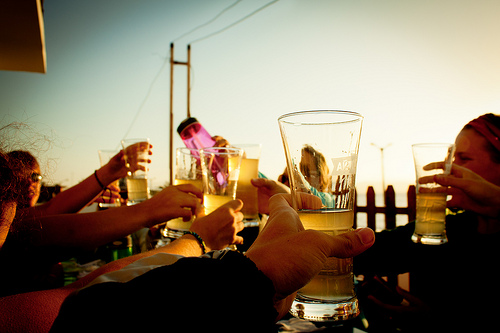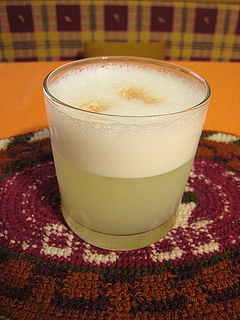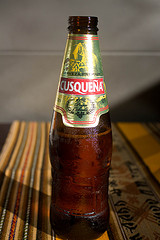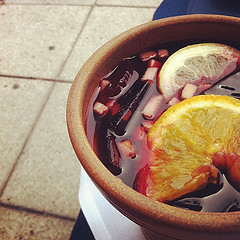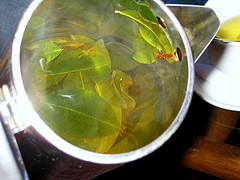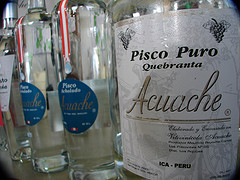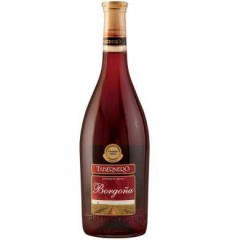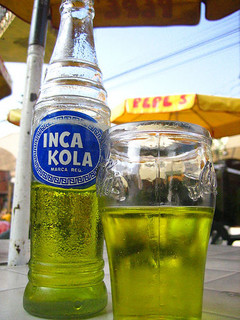Just like any other country, the drinks available in Peru reflect local customs, history and available ingredients. Experiencing the country through these drinks will not only be fun, but will also give you a better understanding of Peru and its people.
The Peruvian Bar: 7 Alcoholic Drinks from Peru You Must Try
For some who dream of Perú, the taste of a Pisco sour fills their mouth. The name is a derivative of a Quechua word. It is a mix of lemon juice, ice, egg whites and Angostura bitters. The liquor is Peruvian Pisco -and it can be made with both lime or lemon. It came from Perú’s capital Lima and was invented by an American bartender in the early part of the twentieth century.
If you have the time to go by Morris’ Bar where the drink was created then you will be in for a treat. There you will take a sip in the place where the Pisco sour was invented. Of course, there has been some discourse between Perú and Chile on who invented it. But the world agrees it was invented in Lima. It’s the national drink here and was spread in the 1930’s as the most popular drink in California. Chances are you may have already had one -but in Perú it’s part of everyday life. There are different types of pisco liquor that you can use, the Acholado or the darker one. mango and passion fruit are examples of new pisco sour flavors that have appeared as local favorites.
If you are not used to drinking a lot, a couple of pisco sours might be enough if you don’t want to have a hangover.
Usually, the most common drink for everybody. When you are in an informal situation, or a bar, some people will call it “Chela bien al polo,” which means a very cold beer. If you want a big bottle some people will call the bottle a margarito, but the most common is una chelita, one beer, or if the situation is more informal, but at a lower level, it will be called una rubia, a blonde one, because of the color.
There are four main beers in Perú:
1. Cusqueña: This beer is cataloged as the premium beer in Perú; the most expensive one, but it has the best taste.
2. Cristal: This is the beer for drinking with groups, or in the stadium.
3. Pilsen: When you go to the cebicherías, or places to eat Peruvian seafood, the main beer served in those restaurants is Pilsen.
4. Brahma: This is the beer consumed mainly by young people,because its price is very low. It is a good beer. It is similar to Budweiser.
There are two types of Chicha. One that is called Chicha de Jora and the other one Chicha Morada.
The traditional Chicha drink in Perú is made from the manioc root, yucca root or maize. It’s made at home in the Andes mountains. Each area uses a different product to make Chichi.
The ancient Inca used the drink for rituals and there has been evidence found of mills in Machu Picchu where researchers believe the drinks were made in mass quantities. The traditionally prepared drink is disappearing from the country. Only a small handful of towns are still making it. But the point is they are still making it!
The other type of Chicha, called Chicha Morada is made of purple corn. It tastes really good, especially cold during the summer. It is made when you boil purple corn. People love it. It is said that it reduces blood pressure and is mixed with other things to make a variety of drinks.
In the southern region it is sold in “chicherias” often simply an empty room at a person’s house. You can easily identify them -look for a bamboo pole that has red flags and flowers on it. It is sold in a caporal to be ingested on site. You may also buy a liter to take home a supply of chicha as well. People love it, say it reduces blood pressure and is mixed with other things to make a variety of drinks.
Did you know that Perú is the country to have Coca tea? It is called Mate de Coca. Not like hot cocoa, it’s literally made from coca leaves, which are also used to make cocaine. So while this is not an alcoholic drink it certainly has a kick. Coca tea is used for medicinal properties. The rich green leaves may be chewed and help absorb oxygen in the high Andes Mountains. Chewing the leaves or drinking coca tea also helps relieve altitude sickness.
Besides these hard liquors and beer, Perú produces it’s own versions of grappa, called pisco, a traditional liquor that is the staple of the pisco sour cocktail mentioned above. Pisco may also be thrown in with mixers such as cola. In fact, until only recently, drinking Pisco alone would have grossed you out. With extremely smooth Pisco options now available it is no longer necessary to hide the strong taste with a mixer.
When you think of wine powerhouses around the globe, I doubt that wines from Perú pop into your head. In fact, it is probably not in the top 15. Even Peruvians don’t know much about their own wines. On a business trip to Perú I sat down for lunch with a colleague. When he suggested I choose a white wine with our seafood meal, I asked him how the Peruvian wines on the list were. He confessed he had never tasted a Peruvian wine. He always stuck to Chilean and Argentinian wines as they are much better known.
So with positive reassurance from our waiter we ordered a local white and found it to be wonderful. It could compete with any wine from a better-known wine producing country. On your next trip to Perú, don’t pay extra for imported wines. Stick to the local options and you will love them.
Inca Kola is the leading brand of soft drinks in Perú. It has a yellow color and it tastes sweeter than Coca Cola. People drink it in many occasions. When they go to the cebicherías or to a chifa, or Chinese restaurant.
Of course you may order Inka Kola with alcohol. One drink is called Inca Wasi or Inka Wasi. It is made with: 1 ounce of pisco, quebranta type, 1/2 ounce of any sweet wine, 1/2 ounce de chuchuhuasi, a Peruvian ingredient, 1 lemon cut in slices, 4 drops of angostura bitters, which is the same that goes into the pisco sour, 1 glass of Inca Kola and six ice cubes.
Sampling Perú through its drinks will never be a disappointment. Just remember if you get with a group of people you will have to have more than a sip of alcohol. You might in fact find yourself drinking an entire bottle.
If you can think of any more interesting alcoholic and non-alcoholic drinks to try in Perú, then let us know.
Check out these other Peru Culture articles.
Featured photo credit: kriswho via photo pin cc
